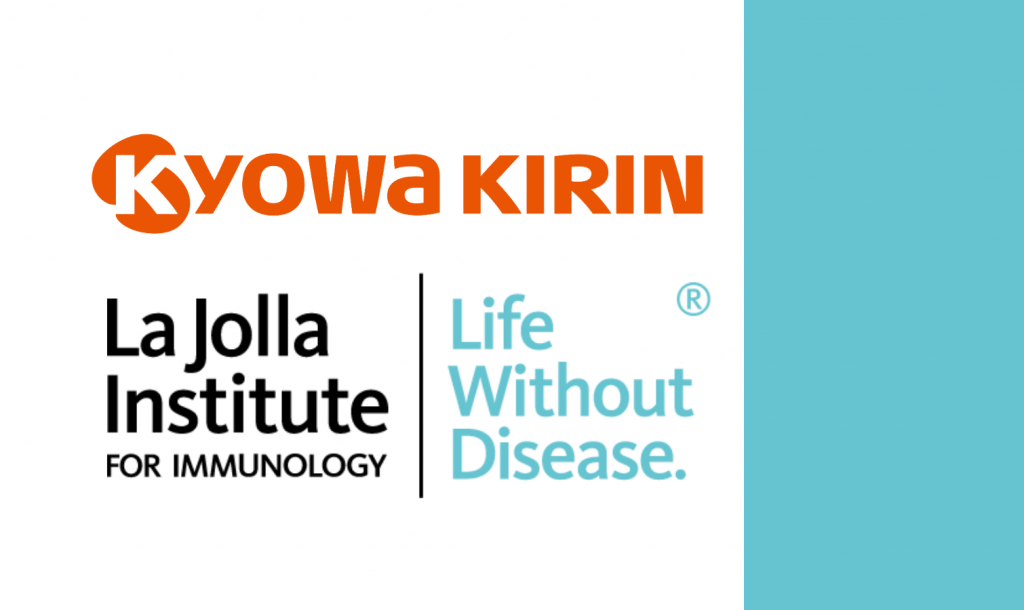LA JOLLA, CA—To understand how COVID-19 survivors develop immunity, researchers need to locate the body’s memory cell headquarters.
A new study, led by scientists at La Jolla Institute for Immunology (LJI) and Columbia University Vagelos College of Physicians and Surgeons, shows that the majority of “memory” T and B cells in COVID-19 survivors reside in the lung and nearby lymph nodes. These cells recognize the SARS-CoV-2 virus and are ready to fight reinfection.
Scientists know that the body’s most powerful disease-fighting “memory” cells mainly gather within tissues. In this study, scientists spotted specialized sites, called germinal centers—where antibody-producing B cells and memory B cells are generated—within the lung-associated lymph nodes for up to six months after infection, even in elderly individuals.
This study offers the first direct evidence that such centers are established and persist after SARS-CoV-2 infection. Thanks to these germinal centers, B cells continue to produce antibodies against SARS-CoV-2 and the body can continue to hone its immune response to the virus.
The new Science Immunology study was led by Donna Farber, Ph.D., the George H. Humphreys II Professor of Surgical Sciences and professor of microbiology & immunology at Columbia University Vagelos College of Physicians and Surgeons. The research was co-led by LJI Professor Shane Crotty, Ph.D., and included LJI Professors Alessandro Sette, Dr.Biol.Sci. and Erica Ollmann Saphire, Ph.D., and LJI Research Associate Professor Daniela Weiskopf, Ph.D.
“Almost everything we know about humans comes from studying blood, but we also need to know what’s going on in the nose, mouth or the lungs,” says Crotty. “We need to know what’s happening in the tissues where the virus is attacking. Finding these germinal centers shows the immune system can learn from this virus how to be in the right place.”
“Our study suggests that to improve protection against the virus, vaccines should target the memory immune cells within the lung and its associated lymph nodes, which can be accomplished with nasal sprays of disabled viruses,” says Farber. “We’ve found previously in mice with influenza that memory T cells in the lung are needed for optimal protection against respiratory infections, and this study strongly suggests that the same could be true in people,” says Farber.

Elderly patients can still fight new viruses
The researchers examined tissues from four COVID-19 survivors—ages 11 to 74—who died later of unrelated causes. The samples, obtained from deceased individuals who have donated organs for transplant and whose families have provided consent, are part of a unique resource that Farber’s laboratory has developed over the past ten years to study immune processes in human tissues.
“We are incredibly grateful to these donors,” says Crotty. “Not only did they save lives through organ donation, but we were able to make critical findings about immunity.”
These donors gave the scientists an opportunity to study SARS-CoV-2 responses across a huge age range.
After age 40, the immune system does not create many new “memory” T cells. “Younger people make lots of these naïve cells because exposure to new pathogens usually occurs in childhood,” says Farber. “When you’re older, you mostly rely on your memory cells and that usually protects you. It’s very rare to encounter a completely new pathogen like we’re experiencing now.”
Yet the team found that even older adults can establish a robust immune memory of a new pathogen. This could mean that vaccines may generate stronger responses in older individuals than scientists previously thought.
“We know the immune system declines with age,” Farber says, “but that someone in their 70s could create a robust and long-lasting immunological memory response shows that parts of the immune system that we associate with younger ages still persists.”
“This was very good news,” adds Crotty. “This shows next generation mucosal vaccines should also be able to generate quality memory to this virus, which can end up in the right places—like the lungs.”
The study, “SARS-CoV-2 infection generates tissue-localized immunological memory in humans,” was supported by the National Institutes of Health (grants AI100119, AI128949, AI106697, AI142742, K23AI141686, S10RR027050, S10OD020056, and contract 75N9301900065), a Helmsley Charitable Trust grant, a Cancer Research Institute Irvington Postdoctoral Fellowship, a National Science Foundation Graduate Research Fellowship and a Canadian Institutes of Health Research Fellowship.
Additional study authors included first author Maya M.L. Poon, Ksenia Rybkina, Yu Kato, Masaru Kubota, Rei Matsumoto, Nathaniel I. Bloom, Zeli Zhang, Kathryn M. Hastie, Alba Grifoni, Daniela Weiskopf , Steven B. Wells, Basak B. Ural, Nora Lam, Peter A. Szabo, Pranay Dogra, Yoon S. Lee, Joshua I. Gray , Marissa C. Bradley, Maigan A. Brusko, Todd M. Brusko and Thomas J. Connors
Sette is a consultant for Gritstone, Flow Pharma, Merck, Epitogenesis, Gilead, and
Avalia. Crotty has consulted for Avalia, Roche, and GSK. La Jolla Institute for Immunology has filed for patent protection for various aspects of T cell epitope and vaccine design work. All remaining authors declare no competing interests.
###





